A Parent’s Guide: The Use of Corn Starch for Diaper Rash
Share
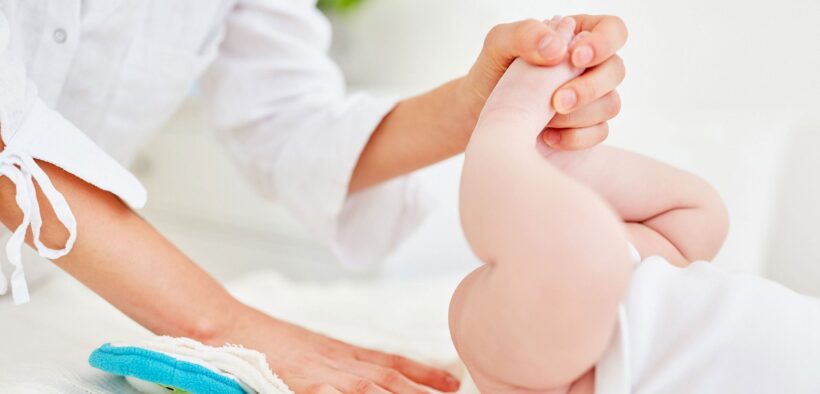
Raising and taking care of babies is a 24/7 job. It requires loads of patience, energy, and hard work to ensure your little one stays healthy, nourished, and well-cared for. Since babies don’t grasp the concept of using a toilet until they’re around 3 or 4 years old, most parents rely on nappies or diapers to keep things clean and manageable.
But sometimes, babies can develop an uncomfortable condition called diaper rash. It’s quite common and can leave their skin sore, red, scaly, and tender. Usually, simple changes in diapering can clear it up, and there are creams and ointments available for treatment. However, in recent times, corn starch for diaper rash has emerged as a potentially effective remedy.
Let’s dive into this remedy and see just how well it really works.
What are the Causes of Diaper Rash?
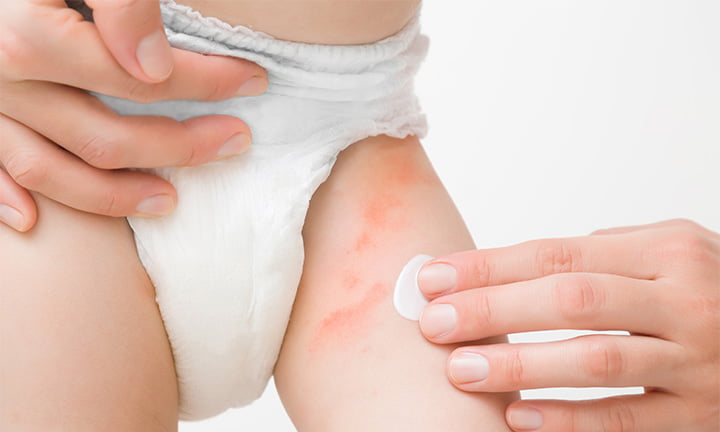
- Wet Diapers: Leaving wet or dirty diapers on your baby for too long is a common cause of diaper rash. When you don’t change their diapers often enough, their sensitive skin can develop a rash. This issue gets worse if your baby has diarrhea and passes stool more frequently.
- Tight-fitting Diapers: Be mindful of tight-fitting diapers or clothes around the diaper area, as they can also lead to diaper rash.
- New Products: Introducing new products on your baby’s skin might trigger diaper rash too. Sometimes, certain detergents, bleach, or fabric softeners used to wash cloth diapers can cause reactions in babies with sensitive skin. Even lotions, powders, or oils applied to the diaper area could have ingredients that don’t sit well with your baby’s skin.
- Yeast Infection: Watch out for yeast infections as well, as they can cause diaper rash. Areas that are warm and moist, like the diaper area, are at risk for developing these infections. Yeast-related rashes are often found in skin creases, thighs, and genital areas, showing up as red dots and scattered bumps.
- Antibiotic Treatment: If your baby is on antibiotics, be aware that they can also contribute to diaper rash. Antibiotics can disrupt the balance of bacteria, making it easier for yeast to grow and cause trouble. Moreover, antibiotics might increase the likelihood of diarrhea, which, in turn, raises the risk of diaper rash.
- Changes in Diet: Changes in your baby’s diet can play a role too. When their diet shifts, the content and frequency of their stools change as well, making them more susceptible to diaper rash.
What is Corn Starch?
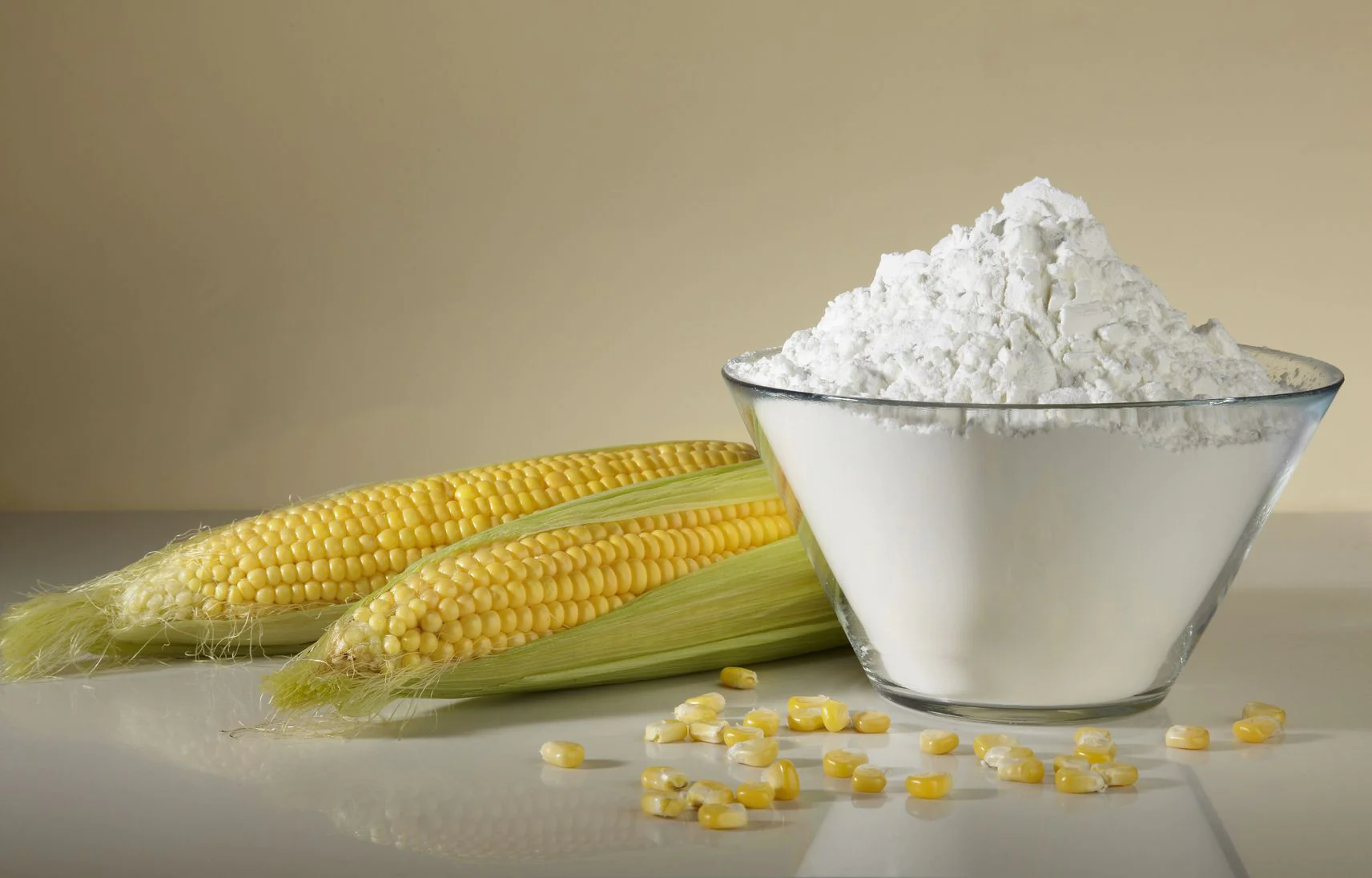
Do you know that powdery stuff called corn starch, maize starch, or cornflour? Well, it comes from corn (maize) grain. They get this starch from the endosperm of the kernel. It’s a pretty common ingredient in food, and you’ll often find it used to thicken sauces or soups and even in making corn syrup and other sugars.
The cool thing about corn starch is that it’s super versatile and can be easily modified to serve many different purposes in various industries.
Is Corn Starch Safe for Diaper Rash?
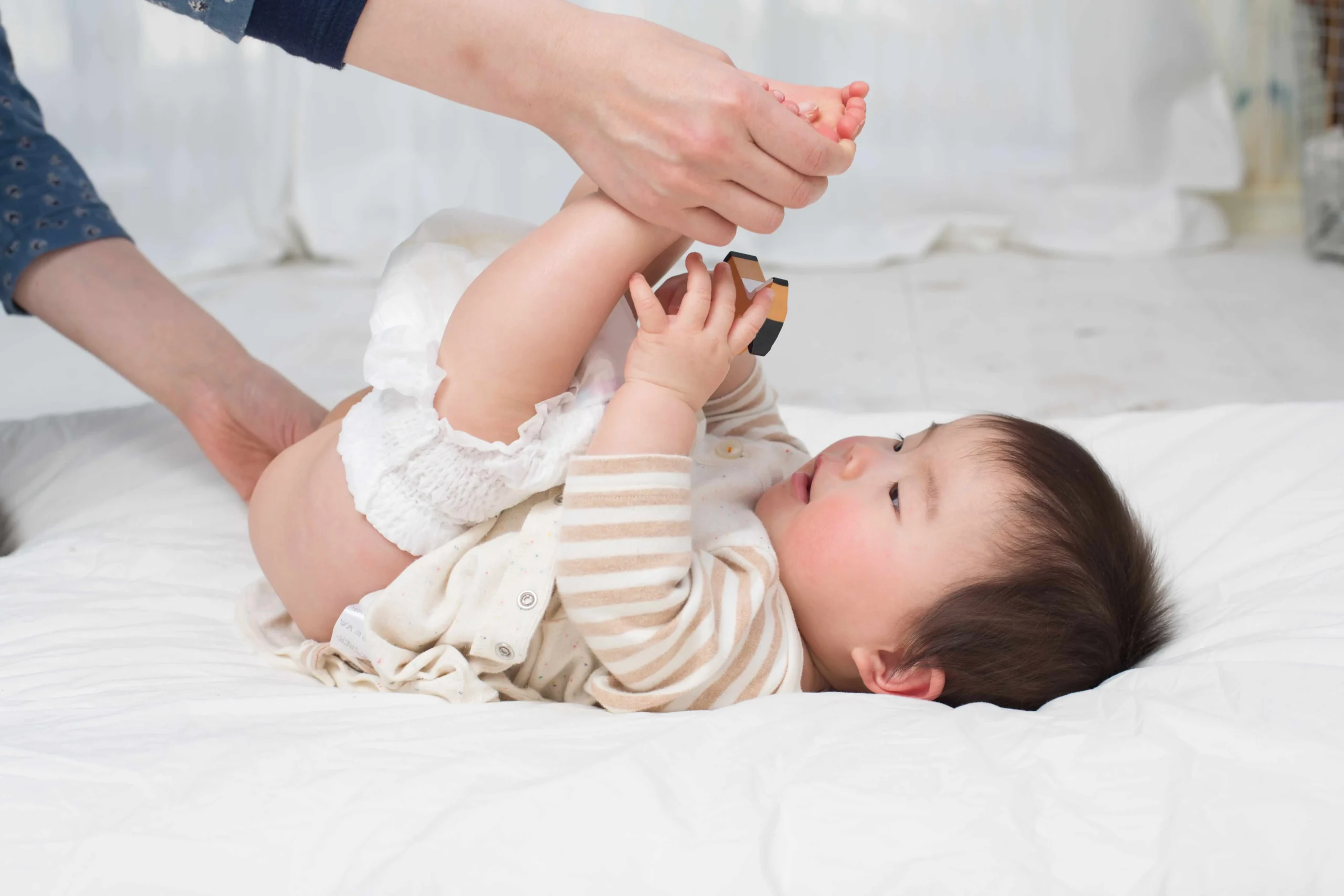
Corn starch serves as one of the powders commonly used to maintain the dryness of a baby’s delicate skin by absorbing any surplus moisture. Its effectiveness in significantly reducing diaper rash symptoms is well-established. What sets it apart from other baby powders is its natural origin, being derived from corn kernels.
Given its natural source, corn starch is considered a safe option for babies. When applied, it forms a protective barrier between the baby’s skin and the diaper, as it does not dissolve in water. This barrier helps safeguard the baby’s skin and contributes to a comfortable and rash-free experience for the little one.
Corn Starch for Diaper Rash: Pros vs. Cons
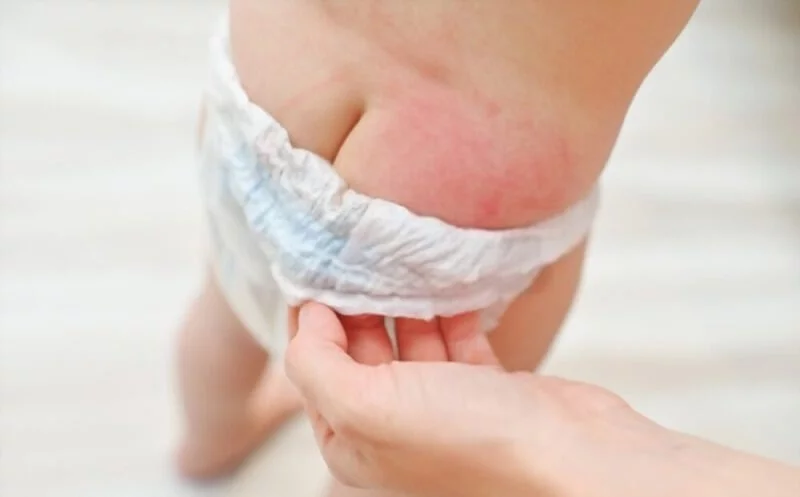
Pros
- Corn starch’s lovely gentle organic substance cares for your baby’s skin like a champ! You definitely don’t want harsh chemicals anywhere near your baby and hence corn starch serves as a great natural alternative.
- We’re aware that moisture is a leading cause of diaper rash. However, it might come as a surprise to learn that cornstarch can work wonders in absorbing excess moisture around your baby’s sensitive areas. By keeping this region dry, it creates an environment where harmful bacteria struggle to thrive, ultimately preventing redness and discomfort for your little one.
- Ensuring your baby’s comfort is essential, and nobody wants to deal with a chafed bum! Thankfully, cornstarch comes to the rescue by forming a protective barrier between your little one’s delicate skin and the diaper. This barrier minimizes friction, providing a cozy and comfortable experience, just like slipping into a pair of soft fluffy socks during winter.
- Using corn starch for diaper rash is a breeze. Begin by cleaning your baby’s bum with warm water and soap, followed by a gentle drying. Sprinkle some cornstarch over the rash and surrounding area, then massage it in until it blends in. Remember to apply it during each diaper change.
Cons
- While cornstarch is favored by some parents, it’s essential to be cautious when dealing with diaper rash caused by a yeast infection. In such cases, cornstarch may aggravate the condition as it can promote the growth of the fungus Candida albicans, responsible for yeast infections. Doctors usually advise using lubricating emollients instead for diaper rash, as they help maintain a moisture barrier on the skin rather than attempting to draw moisture away.
- The effectiveness of cornstarch or any other treatment in treating your baby’s diaper rash largely depends on the underlying cause of the rash. While cornstarch can effectively absorb moisture and reduce friction, it might not be the optimal solution for all types of diaper rash. If the rash is caused by a bacterial or fungal infection, cornstarch may not have the ability to provide a cure. In such cases, it’s essential to seek pediatric care.
Other Alternatives for Diaper Rash Treatment
Parents have commonly sought out corn starch as a natural remedy for diaper rash, but it’s crucial to be aware of the possible risks associated with its use. Therefore, cautious parents may opt to explore safer alternatives first before considering corn starch for diaper rash as a treatment option.
Let’s look into alternative treatment options for diaper rash.
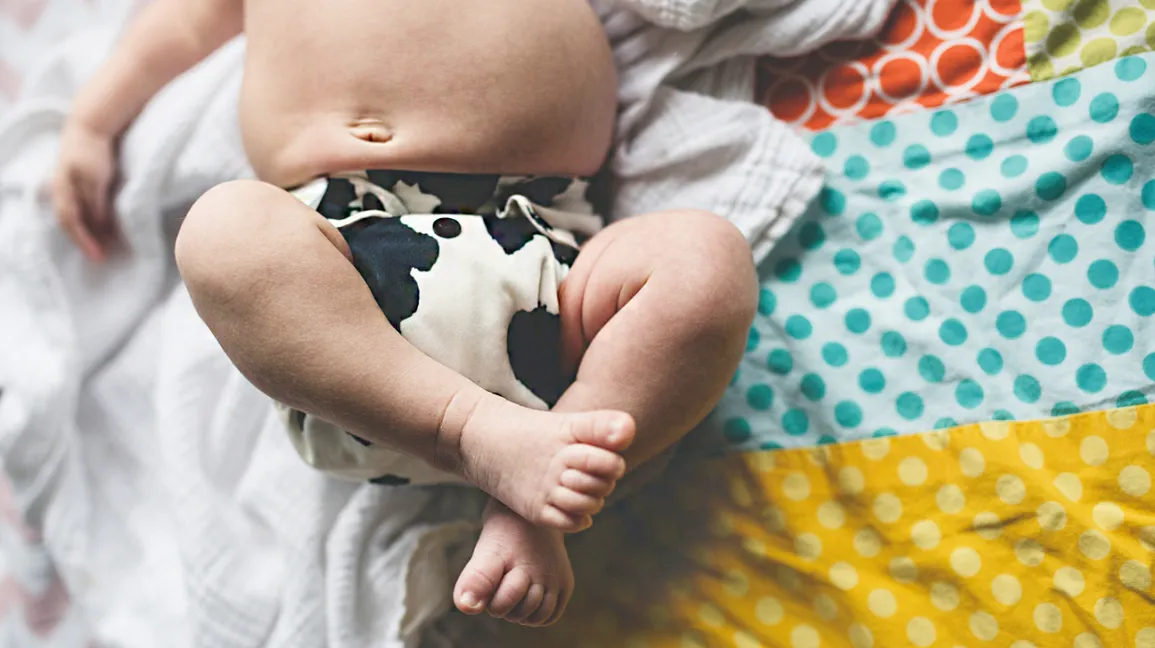
- Cloth Diapers: Cloth diapers are crafted from breathable materials, reducing moisture buildup and the risk of bacteria causing painful rashes on your baby’s bum. Unlike disposable diapers, cloth diapers don’t contain harsh chemicals and fragrances that can lead to further irritation. And if you need some extra diaper rash support, don’t forget to use a diaper cream suitable for cloth diapers.
- Petroleum Jelly: Petroleum jelly is a safe and hypoallergenic ointment that forms a protective barrier on the skin. Its emollient properties help keep the diaper area moisturized and reduce friction, which aids in healing and prevents additional irritation.
- Zinc Oxide: This mineral-based cream can alleviate inflammation and promote healing. It offers a soothing effect on the skin, making it an excellent choice for treating diaper rash. Additionally, it’s gentle on sensitive skin and doesn’t contain harmful chemicals.
- Coconut Oil: As a natural and safe remedy, coconut oil has moisturizing and anti-inflammatory properties. It helps soothe and protect irritated skin, making it an effective alternative for babies with sensitive skin.
- Aloe Vera: A plant-based remedy that reduces inflammation and soothes the skin. Its antibacterial and antifungal properties also help prevent infection, making it a useful treatment for diaper rash.
- Oatmeal: Another safe and natural remedy, oatmeal reduces inflammation and provides soothing relief for the skin. It can be used as a paste or added to a bath to alleviate diaper rash discomfort.
- Calendula: With its anti-inflammatory and antibacterial properties, calendula aids in reducing inflammation, promoting healing, and preventing infection. It’s gentle on sensitive skin and doesn’t contain harmful chemicals, making it a great option for cloth diapers, especially the popular all-in-two cloth diapers.
Tips for Preventing Diaper Rash
Corn starch for diaper rash is a curative treatment option. As the saying goes, prevention is better than cure. Let’s explore different ways in which diaper rash can be prevented.
- Change your baby’s diaper promptly when it’s wet or soiled. If your baby is in the care of a babysitter or childcare provider, ensure they follow the same practice.
- Use warm water to rinse your baby’s bottom at each diaper change. You can use a moist washcloth, cotton ball, or baby wipes, but avoid wipes with alcohol or fragrance. If you choose to use soap, opt for a sensitive skin and fragrance-free variety.
- Gently pat your baby’s skin dry with a clean towel after cleaning. Avoid scrubbing, as it may irritate the skin and invite potential infection. Whenever possible, allow the skin to air dry before putting on a fresh diaper.
- Avoid fastening diapers too tightly. A snug diaper can create a moist environment that encourages diaper rashes and may cause chafing at the waist or thighs.
- Give your baby’s bottom some diaper-free time whenever feasible. Allowing the skin exposure to air is an excellent way to let it dry. Lay your baby on a large towel or sheet (preferably outdoors if the weather permits) to prevent accidents.
- After each diaper change, thoroughly wash your hands. This practice helps prevent the spread of bacteria or yeast to other parts of your baby’s body, your body, or other children. Maintaining good hand hygiene is essential for overall cleanliness and health.
Conclusion
In summary, while corn starch for diaper rash may offer benefits to some babies, it’s not the ideal choice for treating diaper rash due to potential risks. Instead, there are safer alternatives like cloth diapers, diaper creams, and natural remedies that can effectively address diaper rash without any harmful side effects.
To prevent diaper rash, it’s essential to maintain a fresh and clean diaper area for your baby and change diapers frequently. By prioritizing your baby’s skincare, you can ensure their comfort and overall health.
Remember, prevention is always better than cure. Keeping your baby’s diaper area clean and dry as much as possible can significantly reduce the chances of developing diaper rash. Consider opting for cloth diapers that are free from harsh chemicals, changing diapers regularly, and allowing your baby’s bottom some diaper-free time each day to promote a dry environment.















